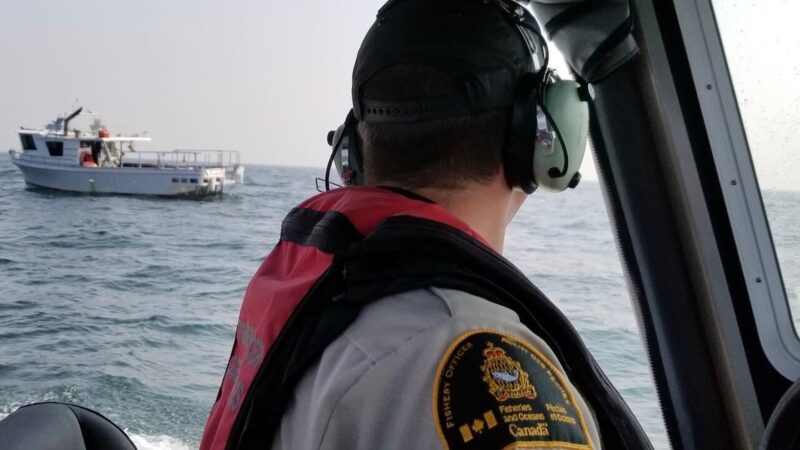Canada’s opportunity to seize the global seafood podium
Canada’s seafood sector ticks so many boxes: sustainable production, food security, low-carbon food, coastal community development, Indigenous reconciliation, science and innovation.
Guest Commentary
By Paul Lansbergen
During the current federal election, Canadians will be discussing and debating the merits of voting for one party or another. One broad topic that has been debated for generations is how to advance Canada’s wild-capture fisheries sector.
First, let’s start with stating the obvious. Seafood production is at the core of the blue economy for Canada, representing 90,000 jobs and $9 billion in GDP. The sector fuels the livelihood of the majority of Canadian coastal communities, and there is no other sector that is as renewable and stable.
Even if you don’t live in a coastal community, the sector impacts you one way or another. The seafood sector ticks so many boxes: sustainable production, food security, low-carbon food, coastal community development, Indigenous reconciliation, science and innovation. To elaborate a little more, the world, led by the High-Level Panel for a Sustainable Oceans Economy, has clearly identified seafood as the leading solution to global sustainable food production.
The Panel made four conclusions:
1) food from the sea provides essential vitamins, minerals, omega-3 fatty acids and other nutrients not found in plant-source foods or other proteins. This is important for global nutrition.
2) The world can produce six times more sustainable seafood by 2050 than today. This is critical to global food security.
3) Increasing the fraction of ocean-based food in the global diet and reducing the share of animal-based foods would contribute significantly to climate change mitigation.
4) Investing in sustainably sourced ocean-based protein yields strong environmental, economic and health benefits – a ratio of 10:1. Canada’s coastal communities would surely welcome such investments.
Much of the debate about our sector is where to place the emphasis in efforts to make the sector more prosperous and sustainable. Should Canada invest here or there? Should policies be changed to favour this fleet or that fleet? All good questions but they ignore one critical fact. The supply chain from the ocean to dinner plates is highly integrated and complex.
The success and prosperity of each business is tied to that of others. Independent harvesters need processors and vice-versa. Also, we need the offshore fleet to provide ‘year round’ food for a growing global population and fully and sustainably realize the economic benefits of our bountiful fish resources.
In recent weeks and months, there have been some sensationalized characterizations that the structural relationships between the different players in the sector is fundamentally flawed.
Don’t let the dramatic arguments taint your view of the sector as a whole. Businesses in the sector, while they can be fiercely competitive, recognize their symbiotic relationships and operate to their mutual benefit.
Playing favourites for a perceived political advantage might score some short-term points but at long-term cost to the entire sector, including Canadians living in coastal communities. Tilting the playing field in favour of one part of the sector can harm everyone. Similarly, measures to fundamentally change the structure of the current seafood industry are being proposed without consultation and input from the very people that built the sector through years of investment and stewardship of the resource, and now find themselves under threat of losing their access to the very resource that they depend on. We need thoughtful, balanced policies aimed at facilitating the sector’s prosperity while ensuring sustainability of our fish stocks.
When we think about innovation and technology, the entire sector needs to invest to keep pace with consumer demands and global competition. Just because we did something one way for 10, 20, or 100 years, doesn’t mean we can keep doing it that way. We need to sustainably produce fish and seafood to meet the demands of the consumer.
That means high-quality, sustainable products in the preferred formats at the right time and at good prices. All companies in the sector need to look forward and consider how they can contribute to their individual success and that of the entire sector. We need to remember the old adage: “Success is not just about producing great products to sell; it is about selling the great products you produce.”
Fortunately, there is a clear path forward. We have an opportunity – to seize the podium of global best sustainable producers. When we achieve that, we will have doubled the value of Canadian fish and seafood, doubled the economic benefits, and doubled domestic consumption. These are bold aspirations without a doubt.
It will take extraordinary effort and collaboration. It will require us to think outside the box. It will mean challenging the status quo in support of sustainable growth.
Working together we can achieve the High-Level Panel’s triple-win vision – for people, nature, and the economy, and most importantly, make Canadian seafood production the very best in the world and the pride of Canada.
Paul Lansbergen is President, Fisheries Council of Canada
Image shows A DFO officer monitoring a commercial fishing vessel during an enforcement operation in BC. (DFO)

